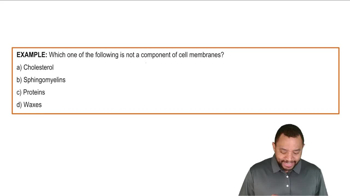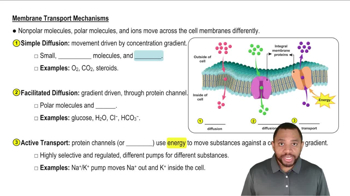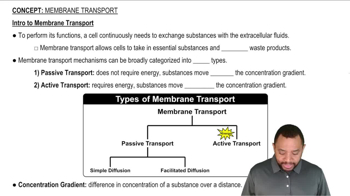Which of the following are found in cell membranes?
a. proteins
b. waxes
c. phospholipids
 Verified step by step guidance
Verified step by step guidance Verified video answer for a similar problem:
Verified video answer for a similar problem:



 :50m
:50mMaster Cell Membranes Concept 1 with a bite sized video explanation from Jules
Start learning